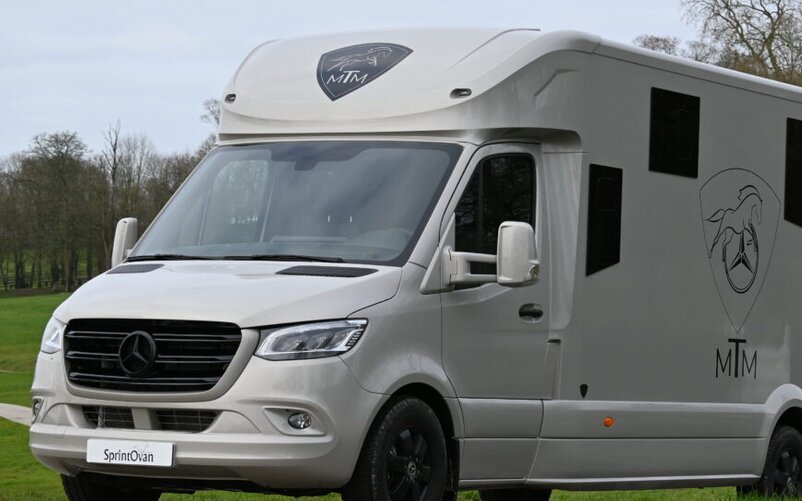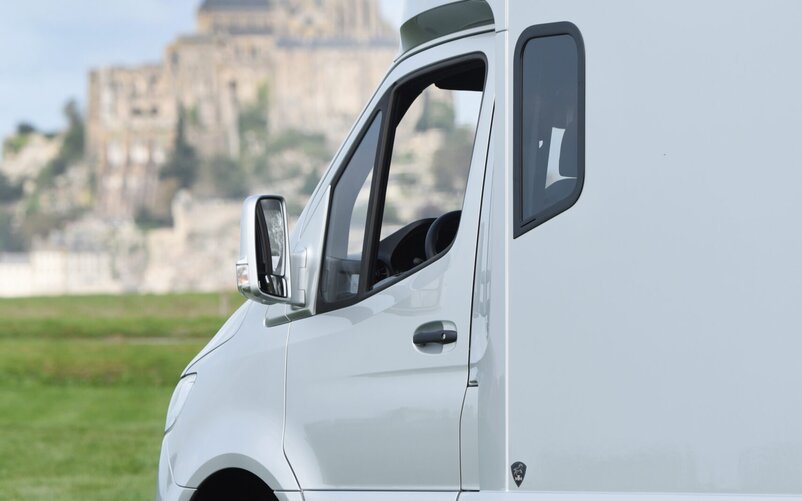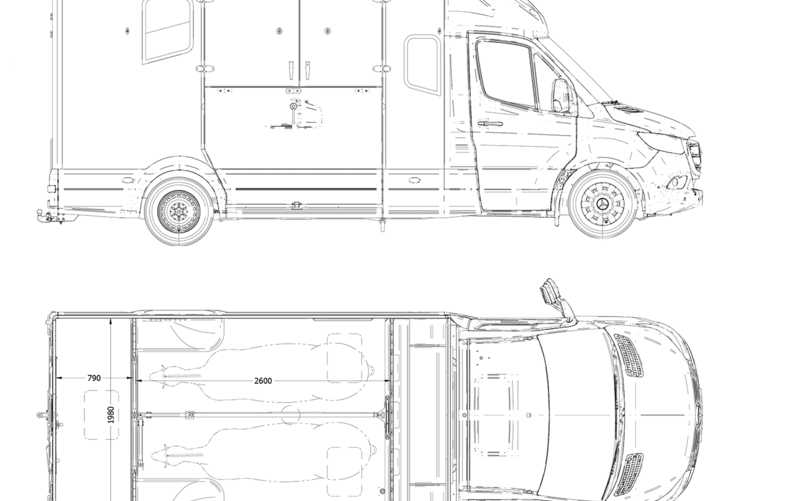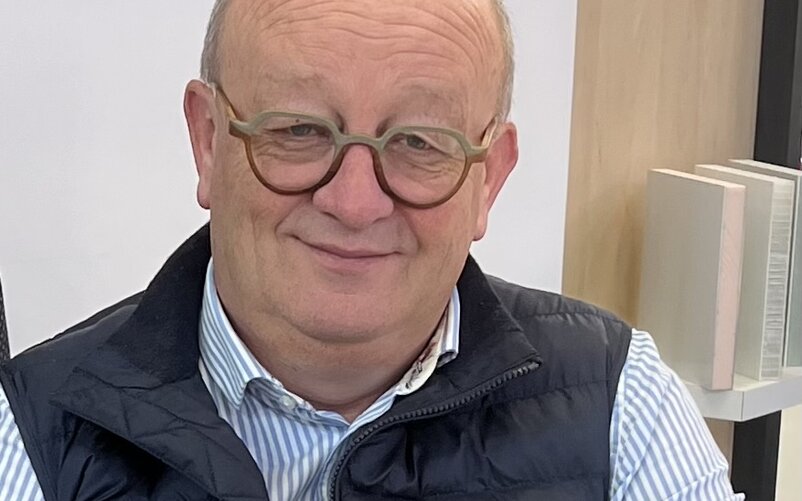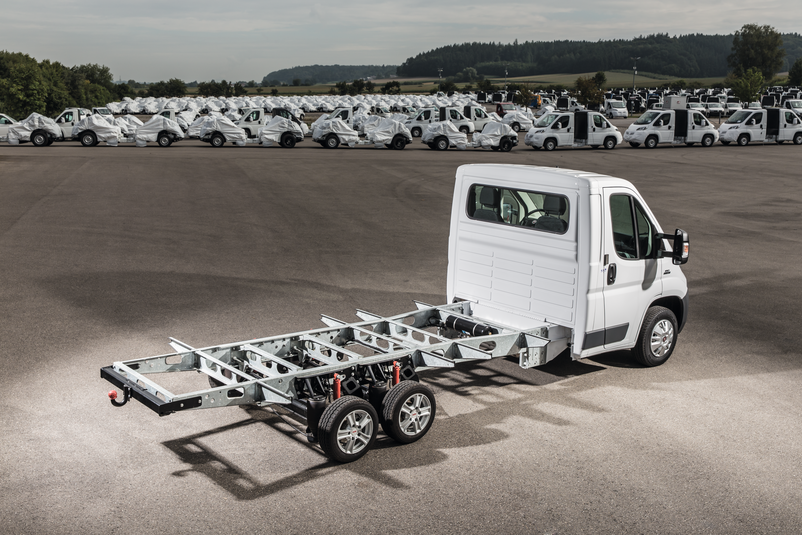Travel comfort for both horse & rider, thanks to the low frame from AL-KO
Transporting horses requires high levels of safety and comfort. In addition, a special driving license may be required due to the weight. The French vehicle manufacturer MTM offers a solution to these problems: a horse transporter that combines a Mercedes-Benz powerhead with an AL-KO low-frame chassis.
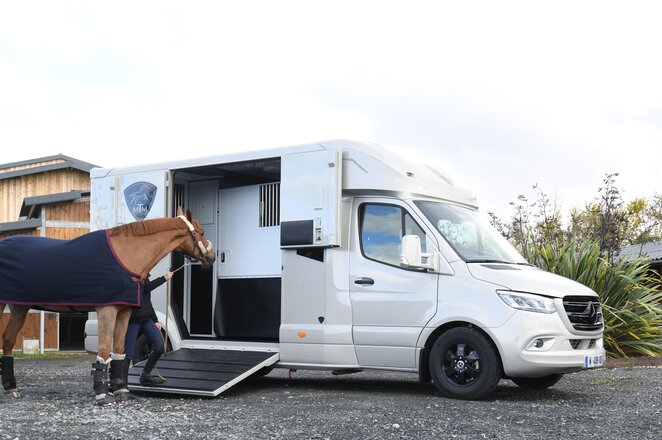
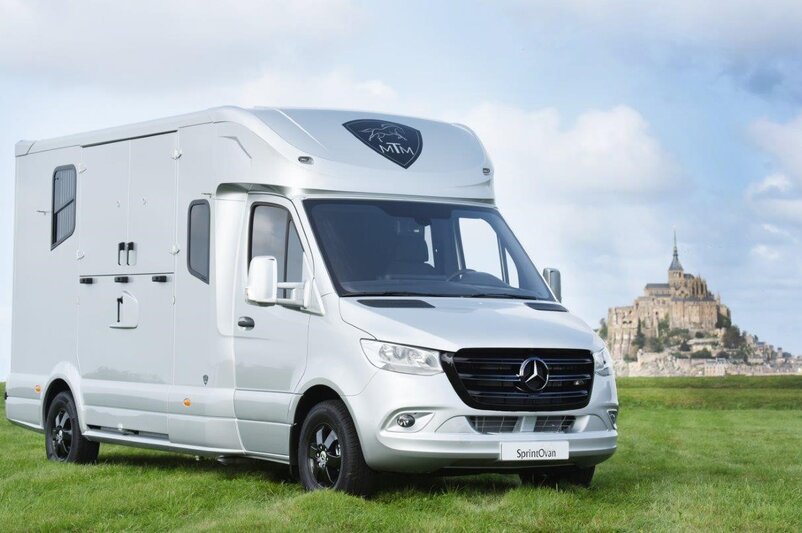
Facts on the MTM and AL-KO collaboration
- Vehicle manufacturer MTM and Mercedes-Benz France are jointly developing the SPRINTOVAN horse transporter, using a chassis from AL-KO Vehicle Technology.
- AMC low-frame chassis: The AMC low-chassis is 220 mm lower than conventional versions and makes transport comfortable and safe for horses and riders.
- Thanks in part to the lightweight construction, the vehicle remains under 3.5 tonnes total weight and does not require an additional driving licence.
MTM: vehicle construction with tradition
Focus on animal welfare
Body manufacturer MTM, from Poilley near Le Mont-Saint-Michel in Normandy, France, specializes in horse transporters in the light and heavy-duty segments. Now in its fourth generation, the company is dedicated to the construction of horseboxes, combining knowledge and practice at the highest industrial level with many years of expertise. MTM offers both horse trailers such as the INOVAN tandem trailer and horse transporters such as the SPRINTOVAN – both based on chassis from AL-KO Vehicle Technology.
MTM’s transporters do not come ready-made but are individually planned and assembled by hand. After all, horses can only realize their full potential if they are transported safely and without stress.
Transporting horses – a challenge
Escape reaction undesired
Transporting horses is a challenge. Horses are not mere objects that you can load and unload. Horses are “flight animals.” This means that they are very sensitive to their environment and try to flee at the slightest sign of danger.
The horses should therefore lose their fear of transport. If they associate danger or stress with the vehicle, this can trigger a flight response. At the latest when a horse weighing hundreds of kilograms panics in the back, it becomes difficult to keep the horse transporter calm on the road.
So, it is essential that the horse has regular training to help it get used to the transport method. It’s also why the journey must be kept as pleasant as possible to mitigate the animal’s fear. The transporter should have sufficient space for the animal and be at least 2.40 m high. The horse should have access to water and feed at the right height, to prevent it from having to adopt an unnatural feeding posture. All these aspects must be considered when designing a transporter. They affect the vehicle height, weight distribution, and axle position.
Horse transporter with ground-level transport cabin
The lower, the better for horse and rider
In June 2022, MTM and Mercedes-Benz France launched a new project together. The goal: To develop a horse transporter based on a Sprinter 317. Keeping the cab as close to the ground as possible gives the vehicle enough clearance for the horse’s height while still being aerodynamic. The lower center of gravity of the vehicle ensures greater safety and the low entry angle makes it easier for animals and people to access the transporter.
AL-KO low-frame chassis in use
Little installation space & optimum driving dynamics
However, the standard Mercedes-Benz Sprinter chassis is too high for this. This is why MTM chose to collaborate with its long-standing partner AL-KO Vehicle Technology. The AMC low-frame chassis from AL-KO is up to 220 mm lower than the original chassis cab. While original chassis usually have rigid axles, AL-KO axles are equipped with independent suspension and torsion bars as standard. This system needs very little installation space and provides optimum driving dynamics – ideal for a vehicle that needs to be safe and light. Its patented shear cam screw connection also means it connects easily to the Sprinter powerhead. The AL-KO chassis’ variable axle position options are also an advantage when designing the horsebox.
‘Customization’ as a key specialty
It's all about the right weight distribution
“Like all living creatures, horses come in different sizes. That is why we at MTM develop transporters that are individually adapted to the animals’ needs. Comfortable and stress-free travel contributes significantly to the animals’ wellbeing,” explains Olivier Theault, President of MTM.
“Customization plays a major role in our business. To optimally distribute the weight of the horses in the vehicle, for example, we must be able to position the rear axle so that the horse’s hind legs rest on top of it. The horse must be positioned within the wheelbase for optimum stability. Our specialty in customization and the low-frame chassis’ lightweight construction concept made AL-KO the perfect partner for our Mercedes-Benz transporter,” continues Theault.
AL-KO lightweight technology for transport
Every kilo counts
The driver can also contribute a great deal to the animals’ wellbeing. A proactive, safe driving style reduces unexpected braking and acceleration maneuvers that could frighten the horse.
Weight plays a major role. A horse can weigh between 400 and 700 kilos on average, depending on the breed. However, certain coldblooded breeds can even weigh over 1,000 kilos. To be allowed to drive a horsebox with a normal driver’s license, every kilo counts – at least in the light vehicle segment.
With a horse on board, a converted panel van can quickly exceed the permissible total weight of 3.5 tons. In France, as in Germany, a corresponding license is required to drive vehicles with a gross vehicle weight of more than 3.5 tons, i.e., a class C driver’s license. In both countries, the requirements for driving licenses are based on Art. 2 No. 1 of EU Directive 2006/12.
“MTM focuses on quality, comfort, safety and animal welfare in all of its vehicles. The trusting collaboration between AL-KO, Mercedes-Benz and MTM has resulted in a van that meets all these requirements,” says Nicolas de Costa, Sales Manager at AL-KO France. “Together we have created a bespoke and stress-free method of transporting that is also suitable for all sized animals.”
